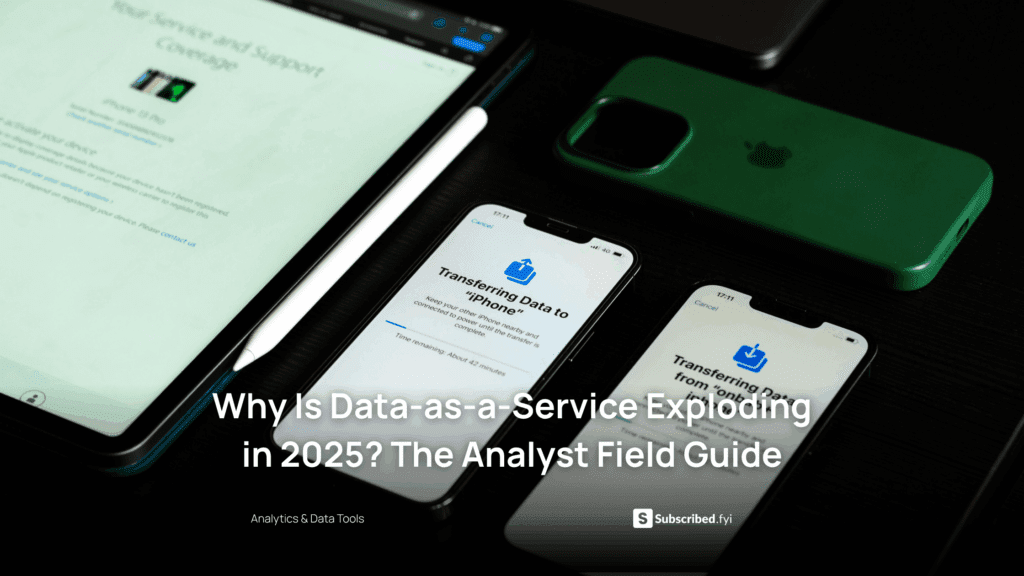Influencer Marketing Tools and Strategies for Brands
- Conversational Marketing Software SEO Software Affiliate Marketing Software Marketing Tools
Influencer Marketing Tools and Strategies for Brands
In the ever-evolving landscape of digital marketing, influencer marketing has emerged as a powerful strategy for brands looking to expand their reach and engage with new audiences. With nearly 3.96 million people actively using social media platforms, a number expected to reach 4.41 million by 2025, the influence of social media is undeniable. Influencer marketing has naturally become one of the most popular methods to connect with consumers where they are – online.
But what exactly is influencer marketing, and how can brands effectively harness this strategy to achieve their marketing goals? In this comprehensive guide, we will explore influencer marketing, from the basics to advanced strategies and provide you with a checklist and template to kick-start your influencer marketing campaigns.
What is Influencer Marketing Strategy?
Influencer marketing is a strategy in which businesses collaborate with influential individuals or leaders within a specific niche or industry. These influencers typically have a substantial social media following or hold sway over a particular market segment. Brands leverage these influencer relationships to promote their products or services to a wider, engaged audience.
The core concept is simple: by partnering with influencers, brands can tap into their reach, credibility, and authenticity to effectively reach and engage with their target audience. Influencers often act as intermediaries, connecting brands with consumers in a more relatable and personal manner.
However, embarking on an influencer marketing strategy requires careful planning and execution. If you’re considering working with influencers to promote your brand, the following steps can help you get started on the right foot:
1. Define Your Goals
Begin by defining the goals of your influencer marketing strategy. What do you aim to achieve? Whether it’s increasing brand awareness, driving engagement, generating leads, or enhancing customer loyalty, having clear and measurable objectives will serve as guiding lights throughout your campaign.
For example, Dunkin Donuts defined their goal when they collaborated with Charli D’amelio to promote their products and increase their app downloads. This collaboration resulted in the “Charli” drink, and their app downloads saw a significant increase.
2. Identify and Define Your Audience
Properly segmenting and identifying your target audience is crucial for a successful influencer marketing campaign. Understanding your audience’s demographics, psychographics, buying stages, and preferred channels allows you to align your influencer choices with your marketing goals.
Tinder provides an excellent example of aligning influencer marketing with their target audience. They collaborated with influencers within the 18-25 age group, a major demographic for their app. By doing so, they could effectively promote their app to the right audience.
3. Define Your Budget
Defining your budget is essential as it dictates your content creation and distribution options. It also determines how you will compensate your influencers. Some influencers may accept compensation in the form of monetary payment, free products, or services.
Your budget should also include the resources needed for content creation, influencer fees, and campaign management.
4. Choose a Type of Campaign
The type of influencer campaign you select should align with your goals and resonate with your target audience. Different campaign types include guest posting, sponsored content, re-targeting, co-creation, competitions, social media mentions, and more.
For instance, Audible partnered with best-selling author Tim Ferriss, allowing his podcast listeners to get a discount on Audible content using a custom link. This campaign effectively engaged the target audience.
5. Decide on the Social Media Platform
The choice of social media platform should depend on your target audience and the nature of the content you are promoting. The platform with the highest usage may vary, and you should select the one that suits your audience and content type.
Platforms like Facebook, Instagram, Twitter, and TikTok offer different advantages and reach different demographics. Make your choice based on the platform most aligned with your target audience.
6. Create Compelling Content
Engaging content is at the heart of any influencer marketing campaign. Collaborate with your influencers to develop content that resonates with their audience and your brand’s message.
For example, Fitplan targeted users seeking fitness solutions and partnered with influencers already sharing fitness content with their followers. This strategic alignment resulted in influencers promoting Fitplan, offering a clear and attractive proposition.
7. Find Your Brand Influencers
The choice of influencers is crucial. They should understand your brand, connect with your audience, and be relevant to the content you’re promoting. You can find influencers through social media searches using relevant hashtags, or you can leverage influencer marketing platforms to identify the best fit for your brand.
Your marketing team should be proactive in staying updated on the social media game to identify the right influencers for your brand.
8. Promote Your Campaign
Once you’ve identified your target audience, ideal influencer, and crafted compelling content, it’s time to promote your partnership. Utilize your social media channels, blog posts, and other marketing channels to generate buzz and maximize your campaign’s reach.
For instance, Fitplan shared workout advice videos by their influencers on their Instagram page. This approach not only engaged viewers but also extended the campaign’s reach beyond the influencer’s immediate following.
9. Track Your Success
Tracking and measuring the success of your influencer marketing campaign is essential. Regularly check and analyze metrics like website traffic, engagement, conversions, and any other key performance indicators you’ve defined in your campaign goals.
This data will help you assess the campaign’s success, determine areas for improvement, and make data-driven decisions for future campaigns.
In conclusion, influencer marketing is a dynamic strategy that can significantly boost brand awareness, engagement, and conversions. With the right influencer marketing strategy, your brand can tap into the reach and authenticity of influencers to effectively connect with your target audience.
The Influencer Marketing Strategy Checklist
Before you embark on your influencer marketing journey, it’s essential to have a solid plan in place. Here’s a checklist to guide you through the process:
- Define Your Goals: Clearly outline what you want to achieve with your influencer marketing campaign. Whether it’s increasing brand awareness, driving traffic, or boosting sales, having specific goals is crucial.
- Identify and Define Your Audience: Understand your target audience’s demographics, preferences, and behaviors. This information will help you choose the right influencers and create content that resonates with your audience.
- Define Your Budget: Determine how much you can allocate to your influencer marketing campaign. Your budget will influence the type of influencers you can work with and the scale of your campaign.
- Choose a Type of Campaign: Select the campaign type that aligns with your goals and audience. Consider options like sponsored content, giveaways, or influencer takeovers.
- Decide on the Social Media Platform: Choose the social media platform that best reaches your target audience. Different platforms have different demographics and user behaviors.
- Create Compelling Content: Collaborate with influencers to develop content that engages their followers and aligns with your brand’s message.
- Find Your Brand Influencers: Identify influencers who match your brand’s values and can connect with your target audience. Use social media searches, influencer marketing platforms, or industry events to find the right influencers.
- Promote Your Campaign: Use your marketing channels to generate excitement about your influencer collaboration. Share the content across various platforms to maximize its reach.
- Track Your Success: Continuously monitor the performance of your influencer marketing campaign. Analyze metrics like website traffic, engagement, and conversions to gauge the campaign’s effectiveness.
By following these steps and using the checklist, you can create a well-structured influencer marketing strategy that aligns with your brand’s goals and resonates with your audience.
The Influencer Contract Checklist
When working with influencers, it’s essential to have a clear and legally binding influencer contract. Here’s a checklist of what to include in the contract:
1. The Basics
Include the official names of both parties and the contract start date. Use straightforward language to ensure clarity.
2. The Expiry Date
Specify the duration of the influencer’s involvement in the campaign, whether it’s a one-time project or a longer-term partnership.
3. The Mode of Compensation
Clearly outline how the influencer will be compensated, whether through monetary payment or other forms like free products or services. Include details about payment timing.
4. Your Involvement in the Campaign
Define the influencer’s role in content creation and strategy, such as the number of meetings they should attend.
5. The Type of Content
Specify the type and format of content expected from the influencer, whether it’s blog posts, social media posts, videos, or other formats.
6. The Approval Process
Describe any review or revision processes, including the number of rounds of revisions and any additional compensation for revisions.
7. The Promotion Requirements
State how actively the influencer should participate in promoting the campaign, including sharing content on their personal platforms and engaging with the audience.
8. The Content Copyright
Address content ownership and copyright terms. Determine whether the brand has the right to edit or modify the influencer’s content and for how long they can access it.
9. The Publication Agreement
Define the publication schedule, frequency, and any additional requirements for content distribution, such as promo codes or tracking links.
10. A Restrictive Covenant
Specify any limitations on the influencer working with competitors and confirm they have no existing contracts with competitors.
11. A Sunset Clause
Determine how long the sponsored content should remain on the influencer’s platforms before it can be removed.
12. A Cancellation Clause
Address situations in which either party may need to terminate the contract and outline any penalties or repayment terms.
13. Image Authenticity
Protect your brand by including clauses to prevent image manipulation or excessive editing of content that may mislead customers.
14. A Morality Clause
Protect your brand’s reputation by outlining conduct guidelines for the influencer during the campaign.
By including these elements in your influencer contract, you can ensure a clear, legally sound agreement that benefits both your brand and the influencer.
The Influencer Proposal Checklist
When approaching potential influencers, it’s essential to present your campaign goals and expectations effectively. Here’s a checklist for creating an influencer proposal:
- State Your Goals: Clearly articulate the goals of your influencer marketing campaign, whether it’s brand awareness, engagement, traffic, or other specific objectives.
- Show Visual Examples: Share visual examples of campaigns you admire to help the influencer understand the type of content you’re looking for.
- Simplify the Numbers: Provide relevant data and metrics in a clear and concise manner. Focus on the metrics that matter to the influencer, and use graphics to make the information visually appealing.
- State the Responsibilities of the Influencers: Outline the specific roles and tasks you expect the influencer to perform, such as content creation, social media management, or engagement with the audience.
- Give Examples of Influencers: Share profiles or personas of influencers you’d like to work with, including key metrics like followers, engagement rates, and style.
- Don’t Be Too Detailed: While it’s crucial to communicate your expectations clearly, avoid overwhelming the influencer with excessive details. Allow room for their creativity and input.
In conclusion, influencer marketing is a dynamic and effective strategy for brands to connect with their target audience authentically. By following these checklists and best practices, you can navigate the world of influencer marketing with confidence and create successful campaigns that achieve your marketing goals.
Are you ready to try these influencer marketing strategies with your organization? Download our free influencer strategy template and start your influencer marketing journey today.











